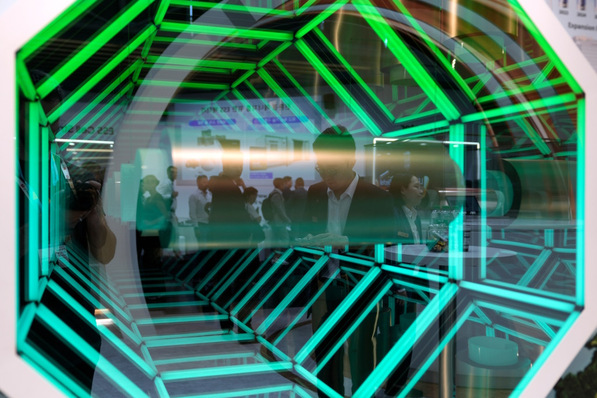Until now LG Chem supplies lithium cells for energy storage systems. Now the Koreans have developed the new storage system Resu. Basically they use the new JH3 cells leading the technology in energy storage and automotive applications. The JH3 enables a very high energy density. The Resu storage system is available as low voltage and high voltage system.
The storage capacity ranges from 3.3 to 10 kWh, but the system is easily expandable. The system is compatible with most of inverters in the market.
Very comfortable for installers are the software upgrades of the battery management system by SD card. The storage system is very easy to install and compact. One can install it within a building or outside, with new solar generators or as retrofitting of existing systems.
High voltage battery inverter without transformer from SMA
The Jury awarded the new, transformerless battery inverter Sunny Boy Storage, too. The device was presented by SMA and especially made for high voltage solar batteries. The Sunny Boy Storage is very charming for retrofit of solar generators in ordert o switch the system from feed-in the grid to self-consumption.
One craftsman can install this device and connect it to the battery. It just weighs 9 kilograms and goes along well with many batteries in the market.
The power for charging is 2,5 kilowatts – perfectly trimmed for self-consumption of residential users. The efficiency is very high: 97 percent. That means an overall efficiency of the whole system with the battery from AC to AC of 90 percent. He battery inverter is AC-coupled and therefor suitable for new PV systems and existing generators as well.
Ferroamp from Sweden: Full energy supply by DC-Nanogrid
The most surprising innovation in this year might be the EnergyHub of the Swedish Ferroamp Elektronik AB. This outstanding idea is an innovative combination of photovoltaics, energy storage (batteries) and DC grid. The whole system has very low losses and includes a local DC nanogrid, modern electronics and the functionality of smart meters.
The heart is a bidirectional, 3-phase inverter with internal phase balance and distributed DC-DC-converters for several PV strings, storage batteries and DC-consumer. The generators are connected by a DC high voltage grid. It is possible to integrate small wind power and hydro generators via converters.
The EnergyHub is a convincing solution by its very high efficiency using DC technology consequently. The system is scalable from 3.5 kW to some MW. The grid will be connected by smart meter. Cloud applications and the integration of charging stations for e-cars are also possible – many ideas for residential customers, for commercial user and the energy supply in agriculture and rural areas. (HS)







